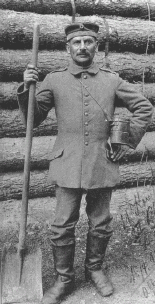Antisemitism Before Hitler
Read for discussion in class:
Bergen, War & Genocide, chapter 1; and
• Helmut W. Smith, The Butcher’s Tale [entire]
I. Discussion: Helmut Smith, The Butcher's Tale
II. Antisemitism as an
Explanatory Framework
A. The Formation of a Persecuting Society?
B. Social Exclusion and Exodus from the West
III. Jews in Early Modern Europe
A. Consolidation and Accommodation (1550-1700)
B. Stagnation and Emancipation (1700-1850)
Map: Migrations and Expulsions of Jews, c. 1000-1500
Map: Dispersion of Rhineland Jews (14th C.)
Map: The Ghetto in Frankfurt (16th C.)
Image: Shrine of the Virgin, Regensburg (1519)
Image: Pogrom in Frankfurt (1614)
Image: Samuel Oppenheimer (1630-1703)
Image: Samson Wertheimer (1658-1728)
IV. Paradoxes of Modern Antisemitism
A. Political Antisemitism in Germany and Austria, ca. 1900
B. A Contrast: The Dreyfus Affair
C. Jews, the ‘Great War,’ and the Rise of National
Socialism
Map: Germany, 1871-1918
Map: Geographic Distribution of Jews in the Empire
Map: Density of Jewish Settlement in Eastern Europe (1881)
Map: Jewish Communities in the Pale of Settlement (1897)
Adolf Stöcker (1835-1909)
Alfred Dreyfus (1859-1935)
 |
Image
left: A photograph taken on Passover, 1917, of Albert Lilienfeld,
who had volunteered for service in the German Army and fought on
the Eastern front. Over 100,000 Jews served in the German Army during
World War I, of whom 12,000 did not survive. Alfred Dreyfus--the
object of antisemitic persecution in France during the 1890s--served
as an artillery officer in the French Army. 55,000 French Jews served
in World War I, of whom 9,500 died. Images
source: Jüdische Geschichte und Kultur |
Image above: The "martyrdom" of Simon of Trent, from Hartmann Schedel, Liber Chronicarum (Nuremberg, 1493). It narrates a tale of ritual murder by the Jews of Trent in 1475, who were accused of having kidnapped and butchered a Christian boy, whose blood was used to prepare matzo. The stories built on stereotypes already several centuries old by then; under torture, the Jews confessed to the crime and were executed. In the end, thirteen men were executed; a ninth committed suicide. As depicted in this image, the Jews all wear an identifying mark, a ring on their outergarments. Soon after the events of 1475, "Little Simon" became the object of popular saint veneration. Image source: Wikisource.
